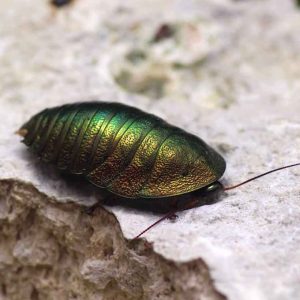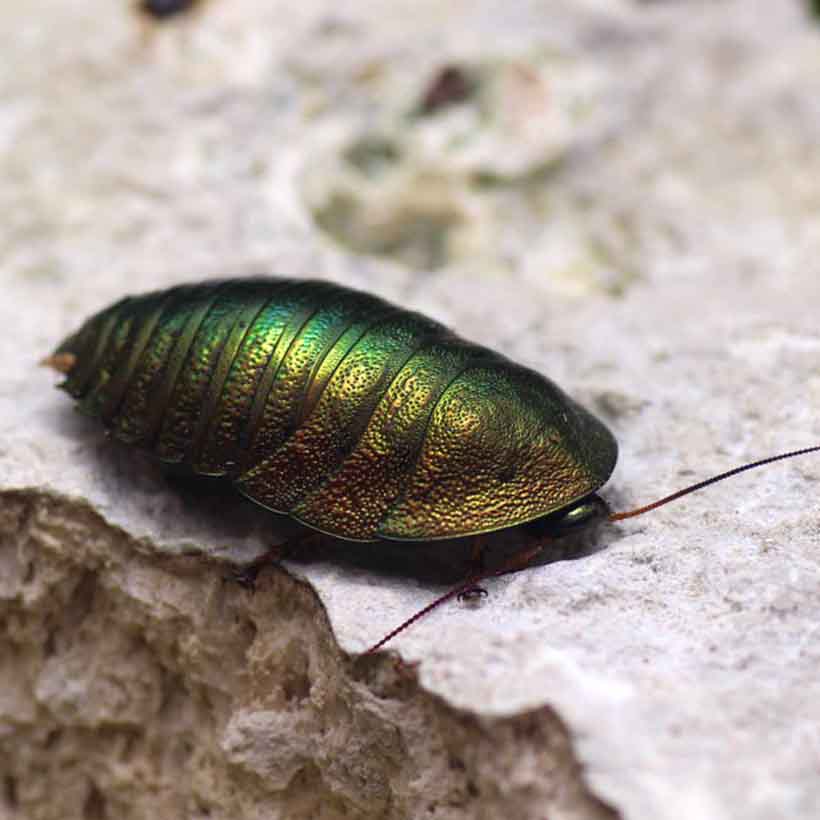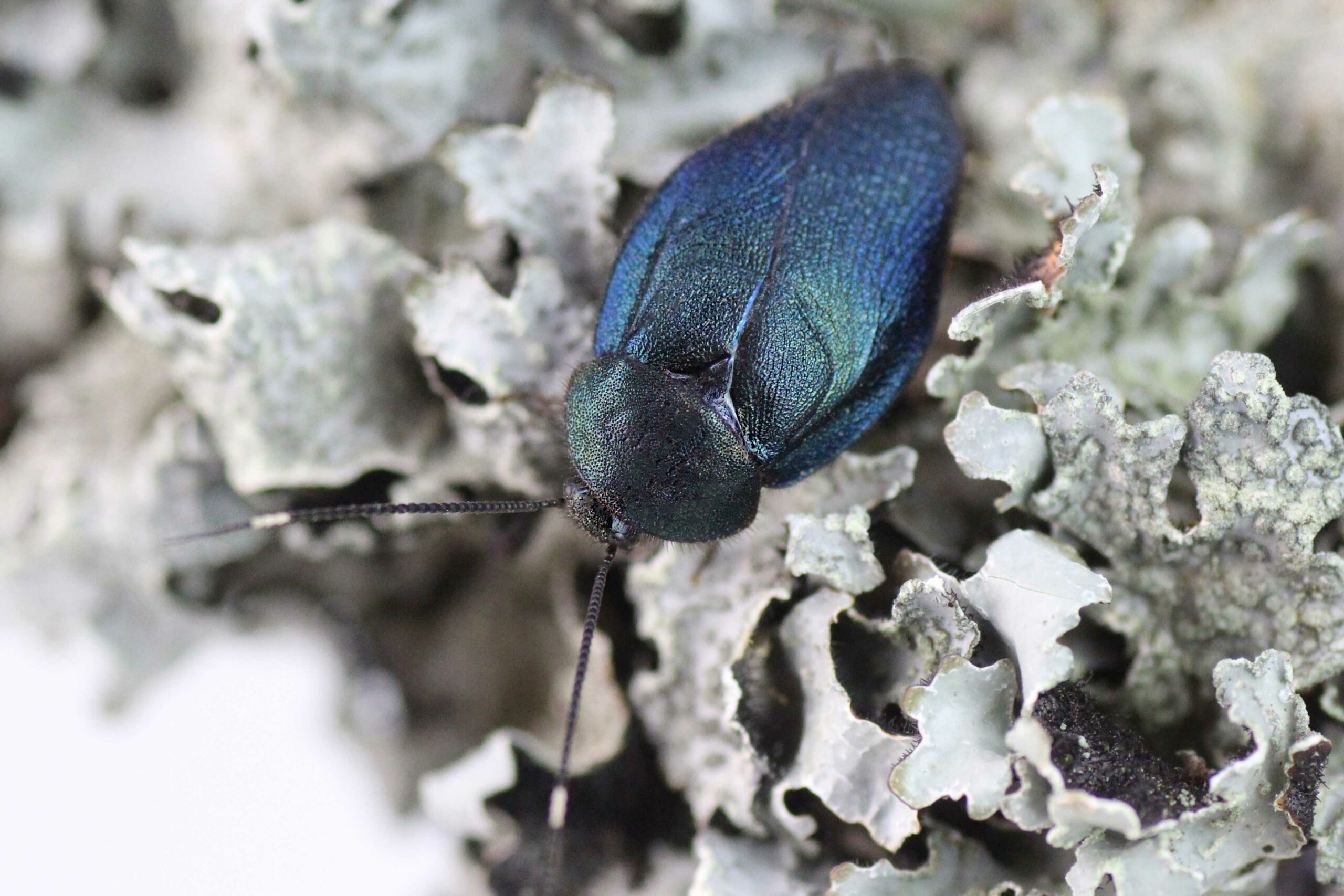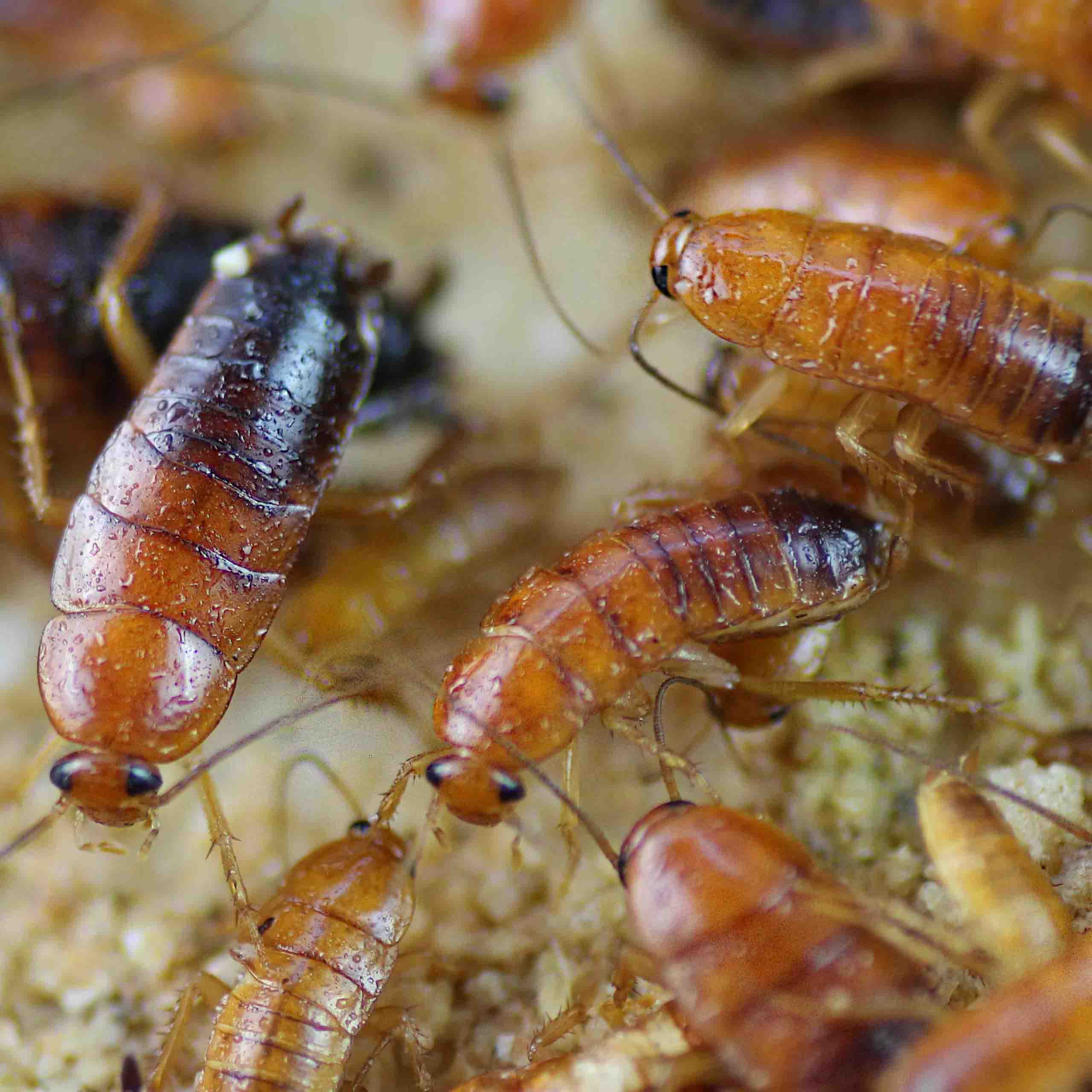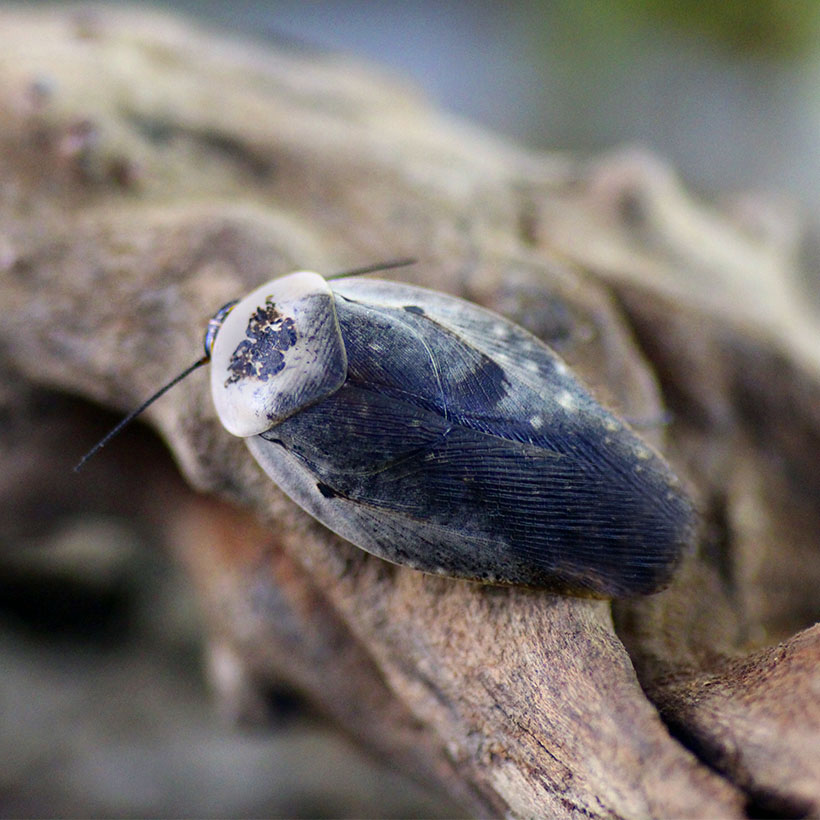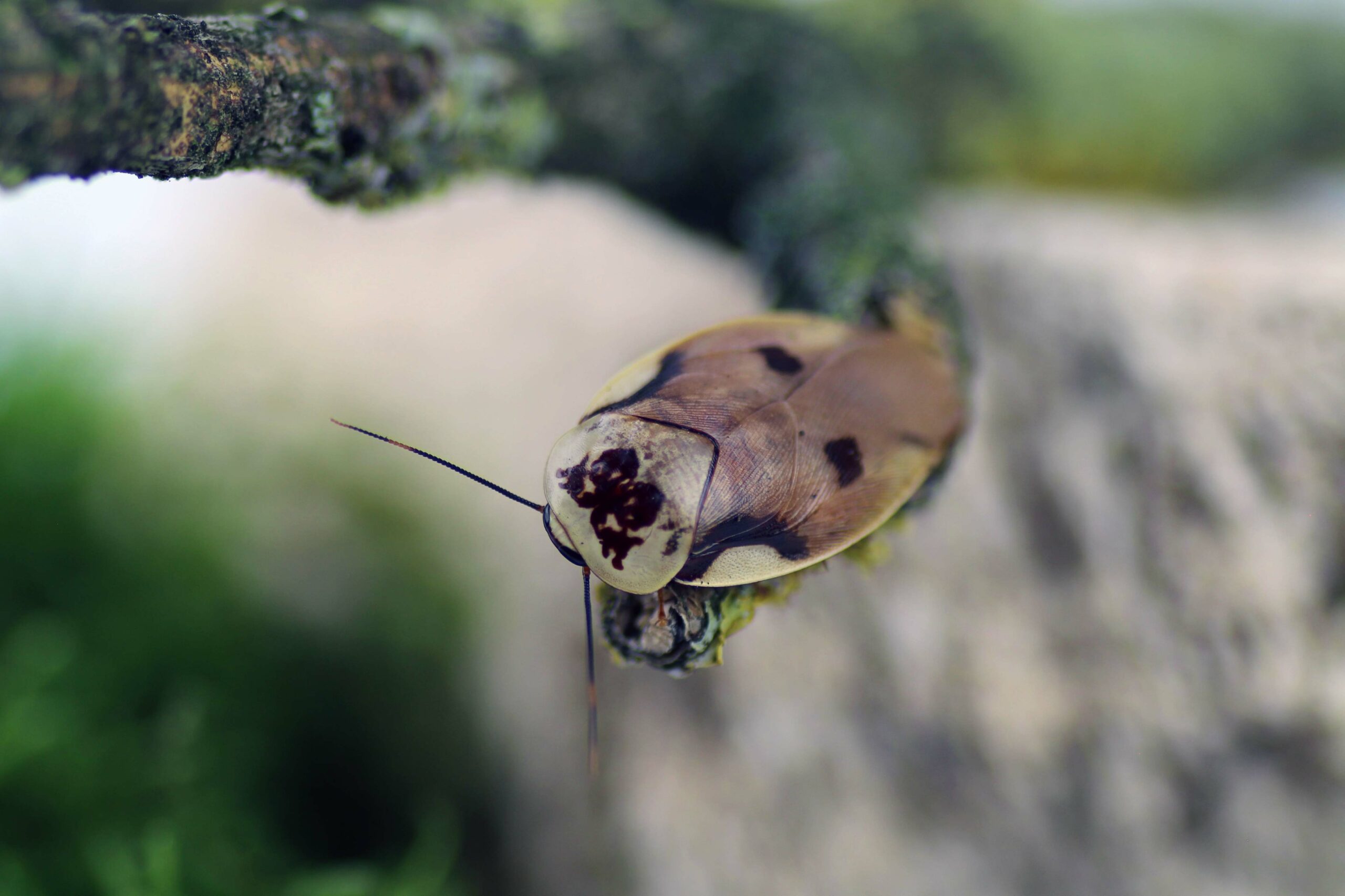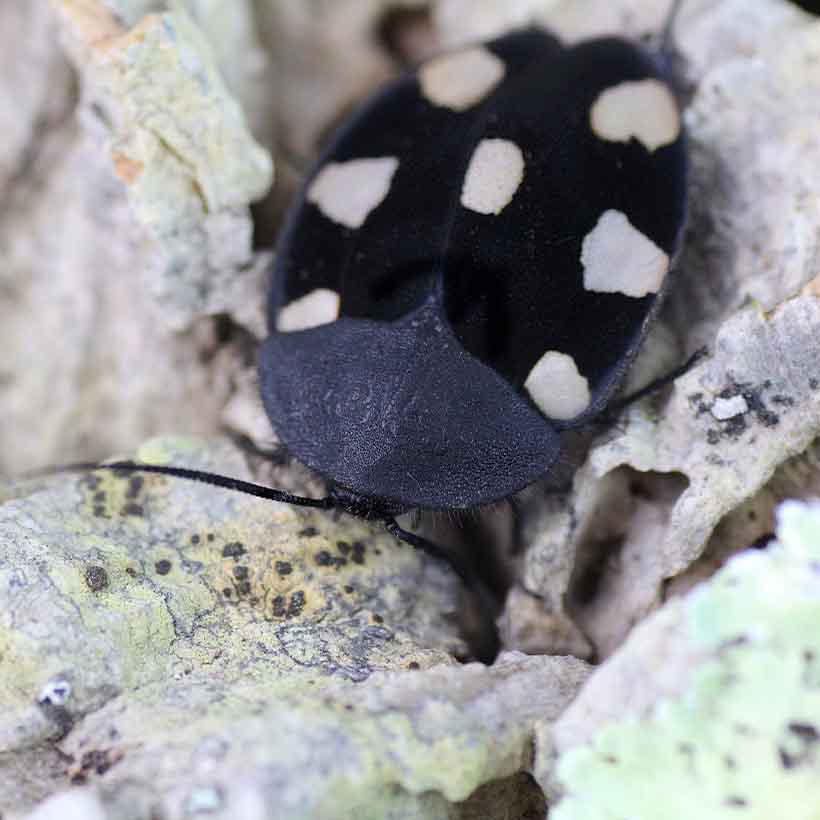Your cart is currently empty!
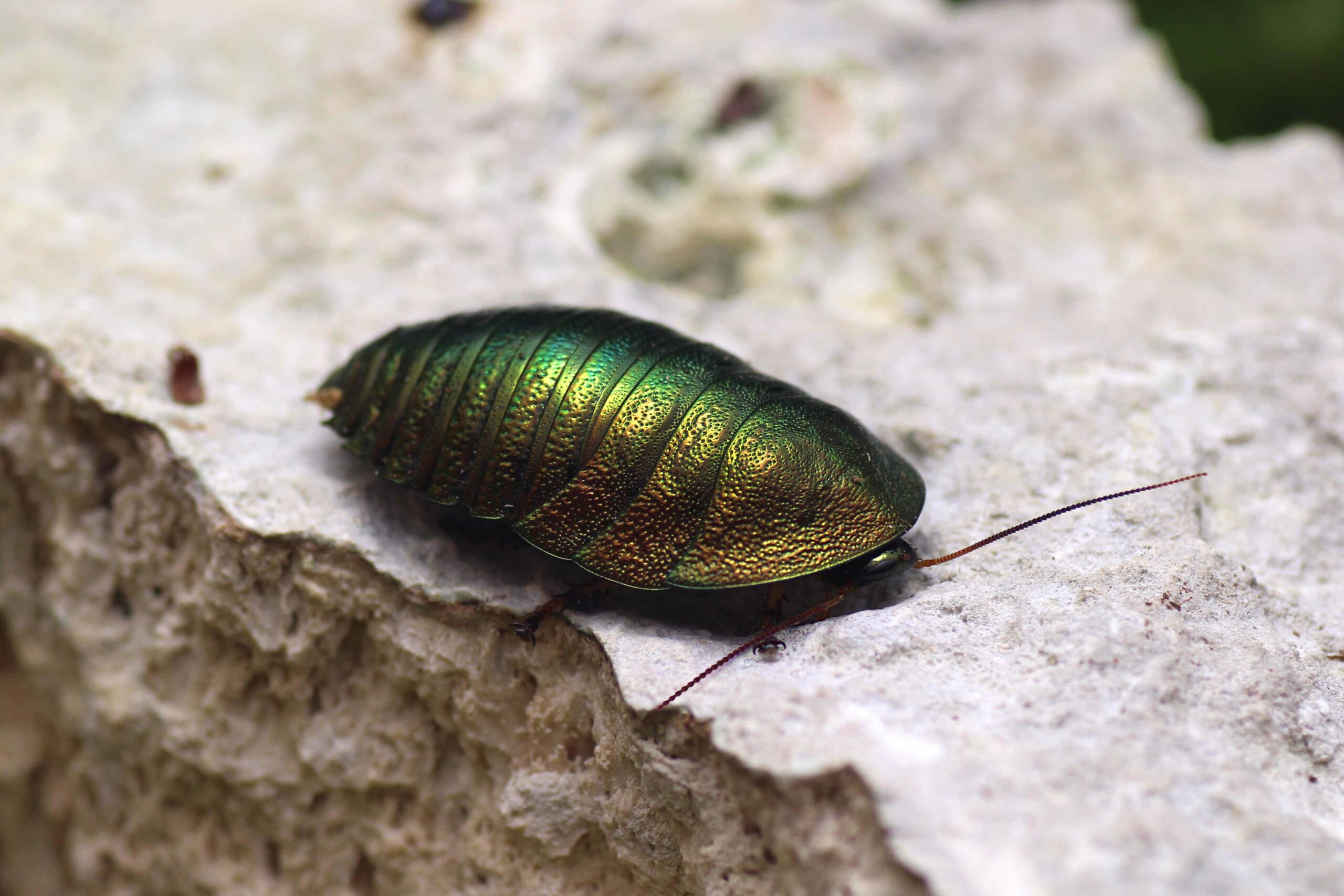
Pseudoglomeris magnifica “Emerald cockroach”
Written by
on
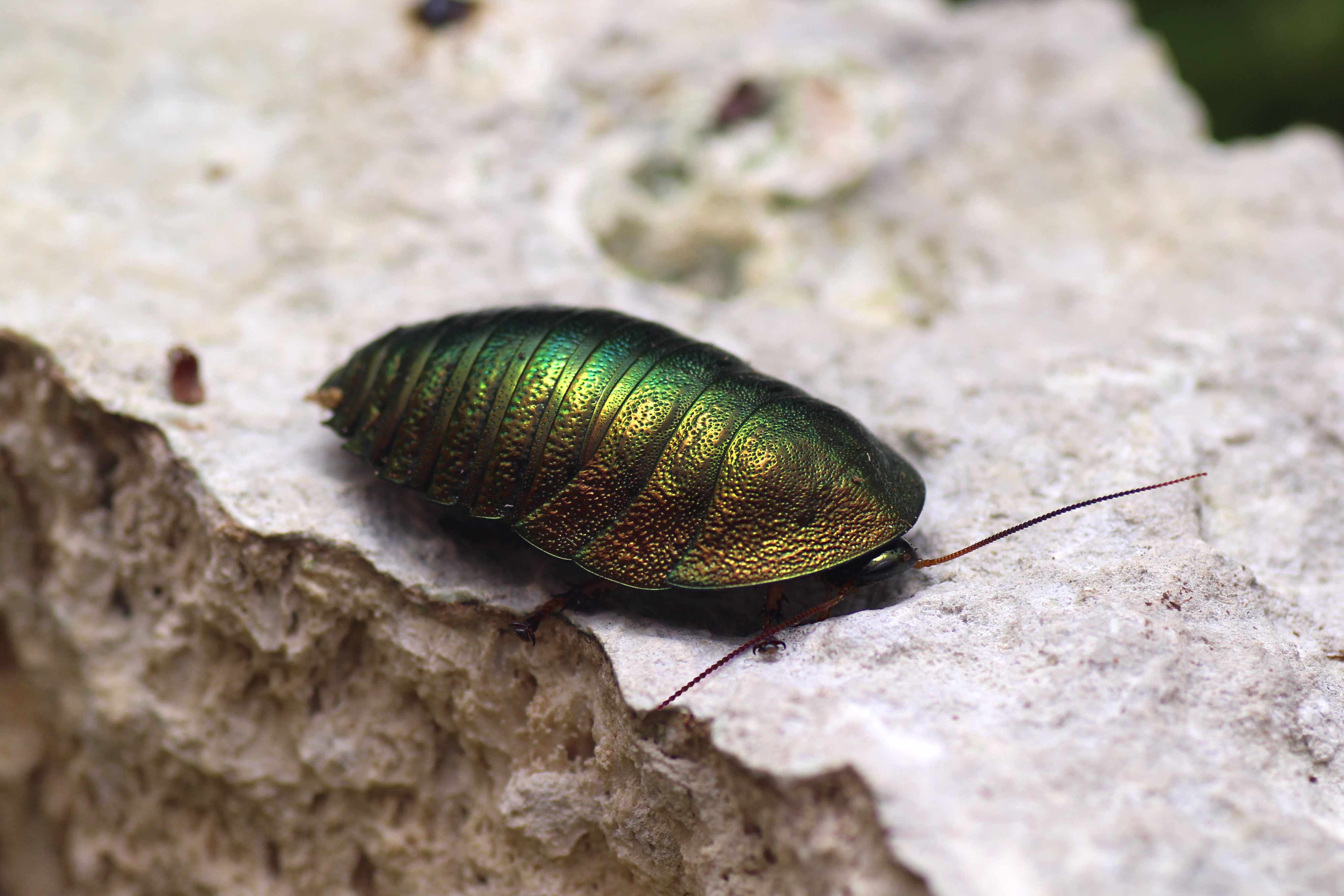
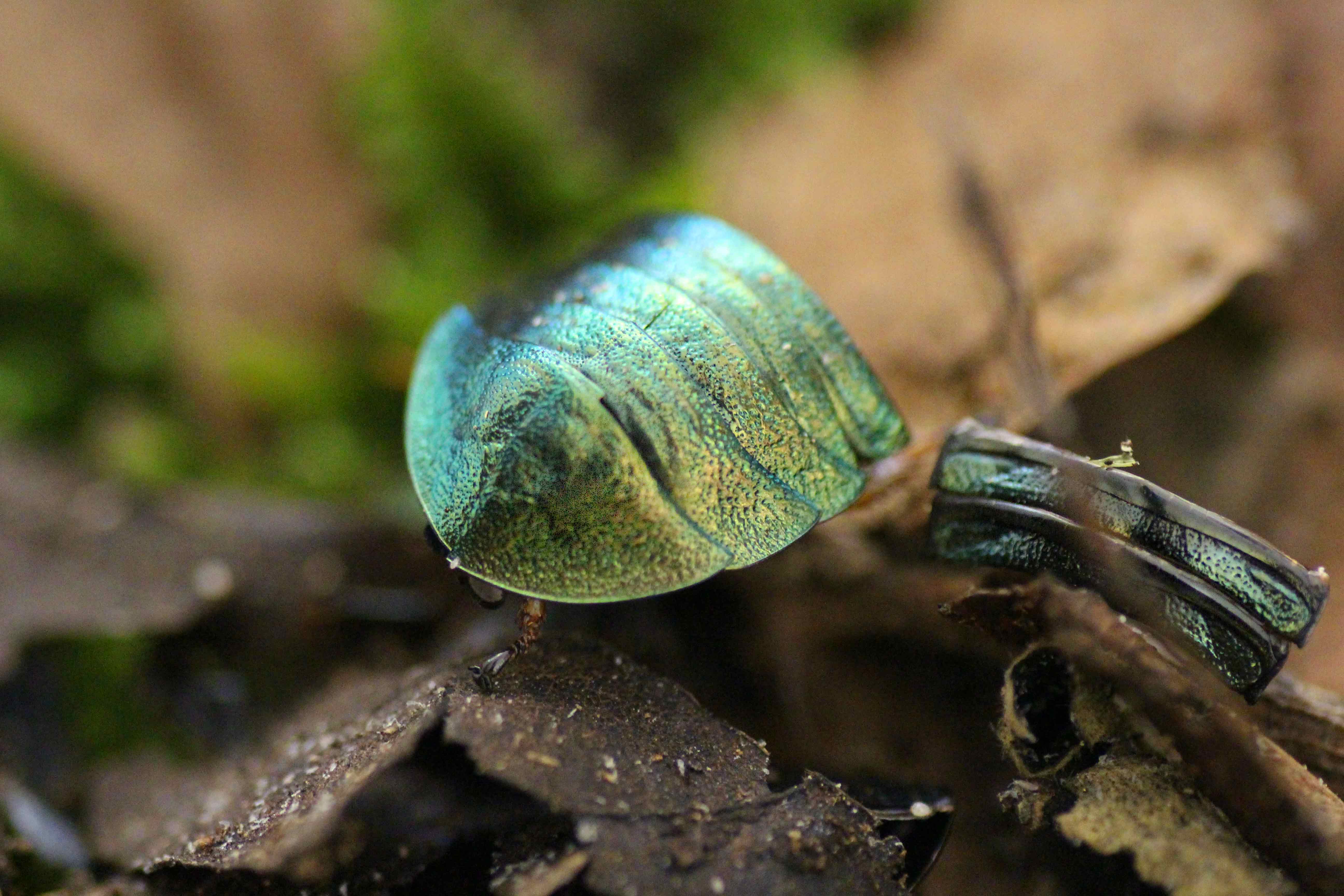
| Origin | China, Vietnam |
| Temperature | 23-28 °C |
| Size | 3.0 cm |
Perhaps some of you are wondering why you have ended up with a husbandry report on a cockroach species. This simply shows how the Pseudoglomeris magnifica captivates us. At first glance, it is its fascinating external appearance that reminds us more of a rose chafer than a cockroach. The metallic shimmering exoskeleton glows from green-metallic to copper-metallic depending on the incidence of light and is actually far too conspicuous for an insect that is so far down the food chain. But as soon as you combine their behaviour with their appearance, you realize that nature is never wrong.
Pseudoglomeris magnifica is a diurnal cockroach species that can be observed all day long in search of something edible. It is not in a hurry at all, but moves carelessly until it reaches the highest point in the terrarium. On its way, it likes to nibble on everything it can find tasty. It especially likes to eat its fill of lichen, pollen and fruit. Afterwards she cleans herself extensively, completely unprotected in the enclosure, before continuing her walk. As the reproduction rate is very low for a cockroach species, with a maximum of 12 nymphs per litter and a gravidity (pregnancy) of up to 6 months, one could conclude that its appearance mimics that of an inedible species of rose chafer. This protective mimicry is relatively common in nature and this would be a logical conclusion for me. All we need now is the right beetle to go with this theory.
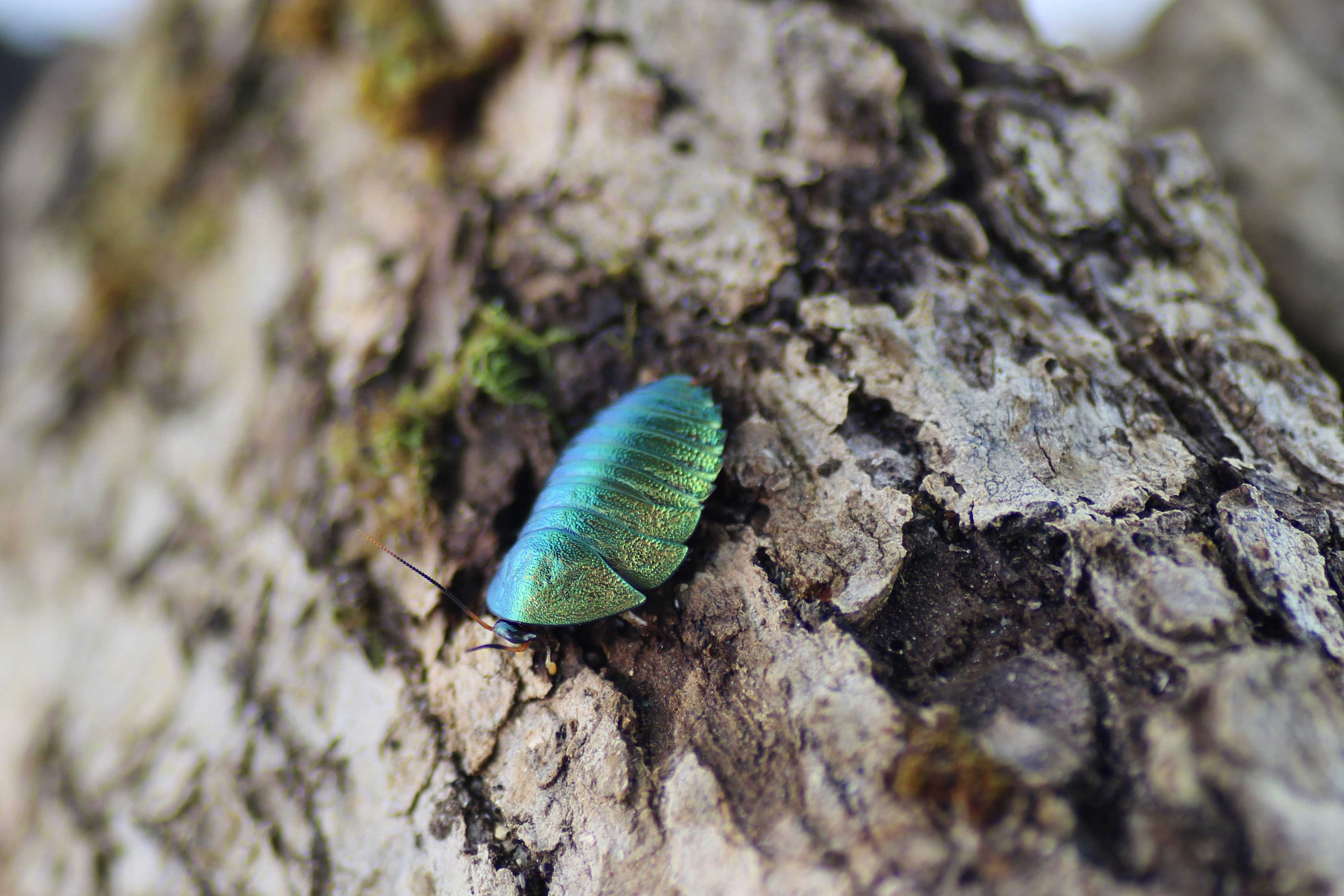
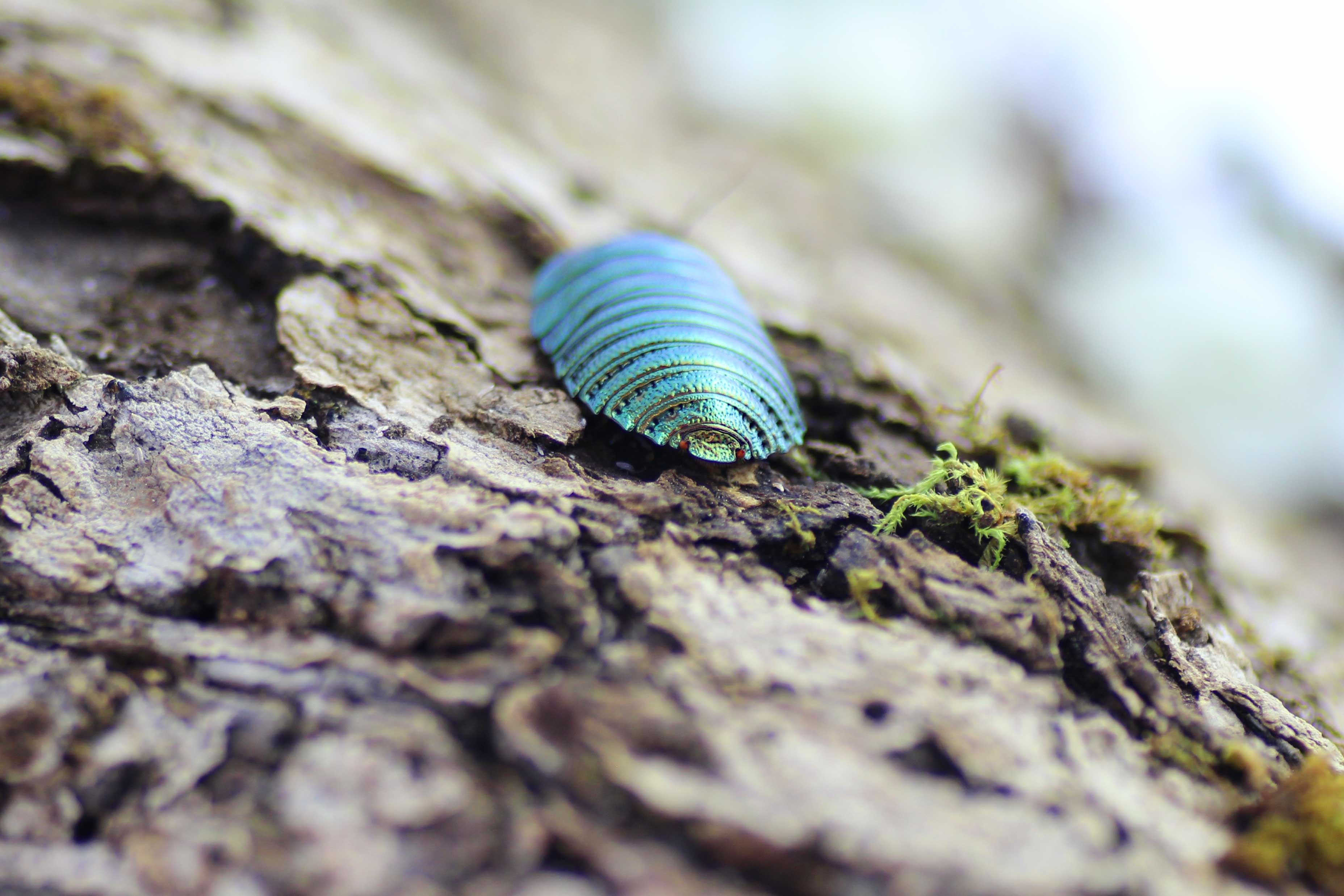
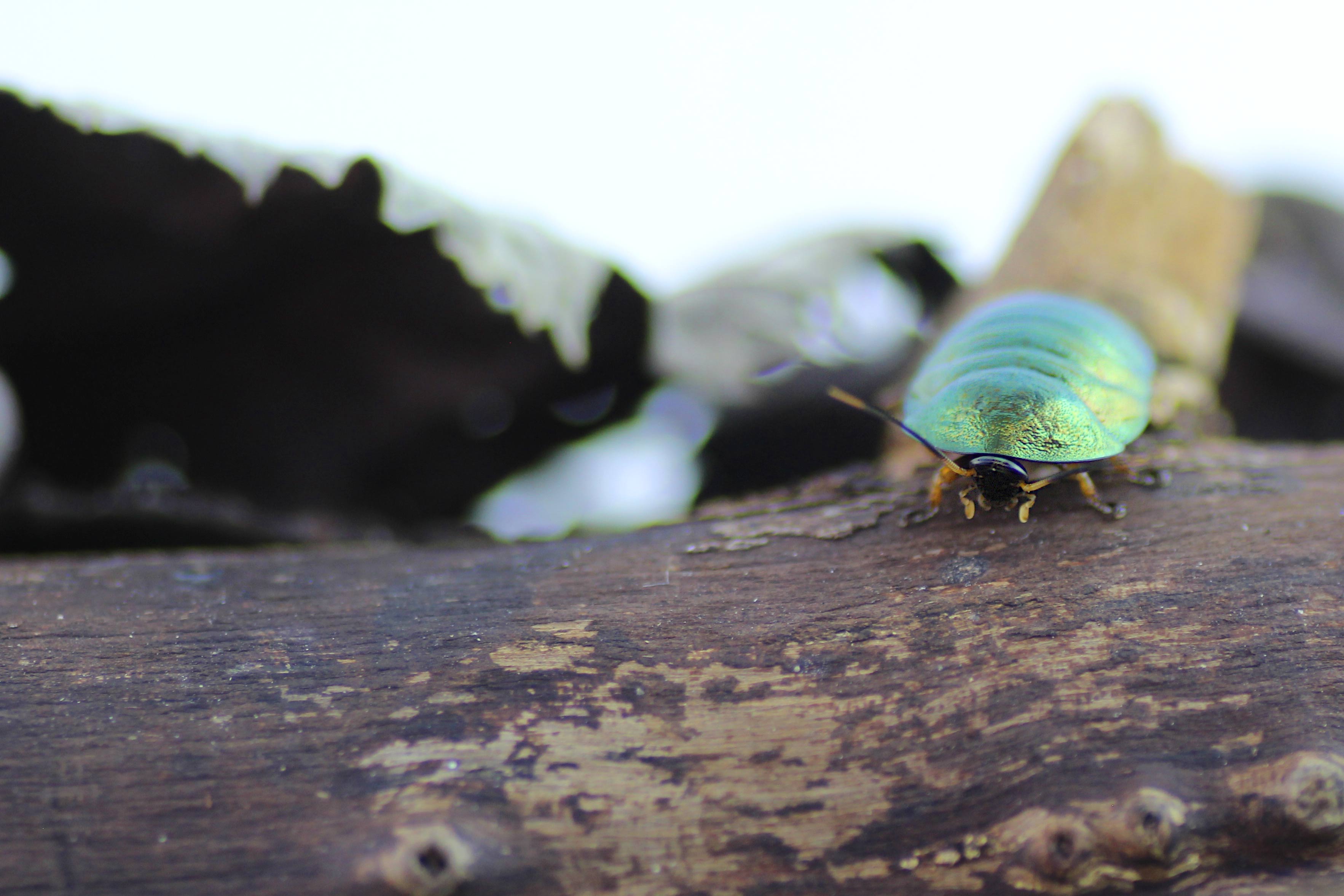
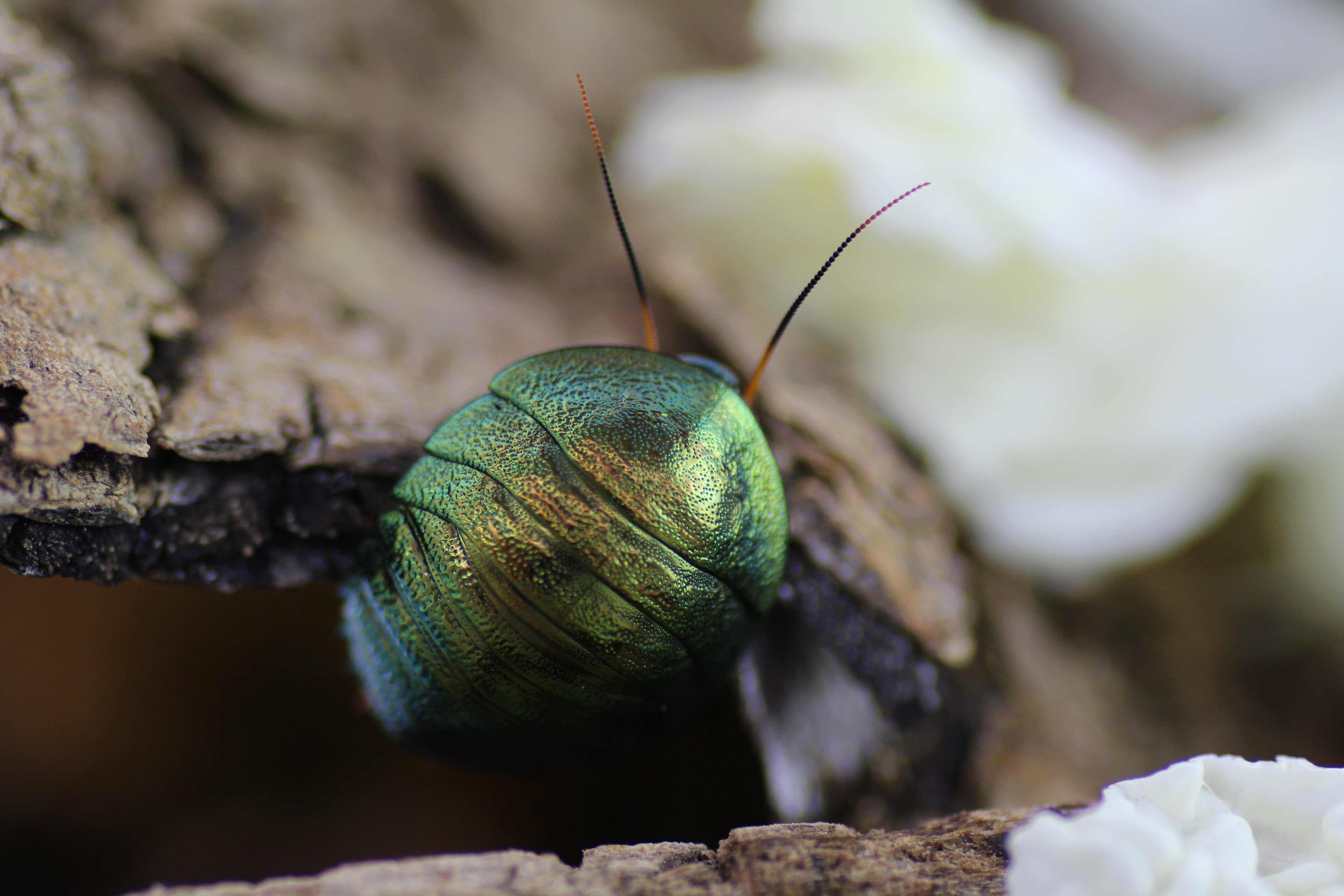
Container:
For a breeding group of 10 animals, you can start with our complete Isopod set. The size of 28x19x14 cm with a capacity of 5 l is also sufficient for a good time until the breeding group becomes too large for it. I can’t give you an exact time, as the temperature factor and the developmental stage of the breeding group also play a role.
We use our forest humus as substrate. As Pseudoglomeris magnifica likes to absorb water in the form of water droplets from the glass or leaves and should ideally be sprayed daily, choose a substrate height of 5-10 cm. This allows the substrate to absorb the water and prevents waterlogging. We also inoculate the forest humus with springtails, which utilize impurities such as droppings and leftover food and thus prevent mould.
Pregnant adult females like to hide under curved bark cavities. You should therefore offer them these hiding places in different climate zones in the terrarium, e.g. one hiding place on the ground and one without ground contact. In this way, the animals that moult can choose the more humid spot near the floor and the one or other cockroach can choose the somewhat drier hiding place.
We also offer them larger pieces of rotten wood. They like to eat small tunnels in them. They don’t seem to eat the wood, as we can always find fine sawdust next to it. More and more pregnant females can be found in these tunnels.
Branches and climbing opportunities should never be missing. You can always offer new, lichen-covered branches and thus enhance the food supply at the same time.
Pseudoglomeris magnifica are disk runners and therefore a tight-fitting lid is a must. The young nymphs are approx. 3 mm in size and escape from every crack, no matter how small. We use a foam seal for windows attached to the top edge of the box, with which we have had very good experiences.
You can offer the crawlers a 15 W spotlight as a heat source. It is not a problem if the temperature rises to 30 °C at the hottest point.
We also offer them larger pieces of rotten wood. They like to eat small tunnels in them. They don’t seem to eat the wood, as we can always find fine sawdust next to it. More and more pregnant females can be found in these tunnels.
Branches and climbing opportunities should never be missing. You can always offer new, lichen-covered branches and thus enhance the food supply at the same time.
Pseudoglomeris magnifica are disk runners and therefore a tight-fitting lid is a must. The young nymphs are approx. 3 mm in size and escape from every crack, no matter how small. We use a foam seal for windows attached to the top edge of the box, with which we have had very good experiences.
You can offer the crawlers a 15 W spotlight as a heat source. It is not a problem if the temperature rises to 30 °C at the hottest point.
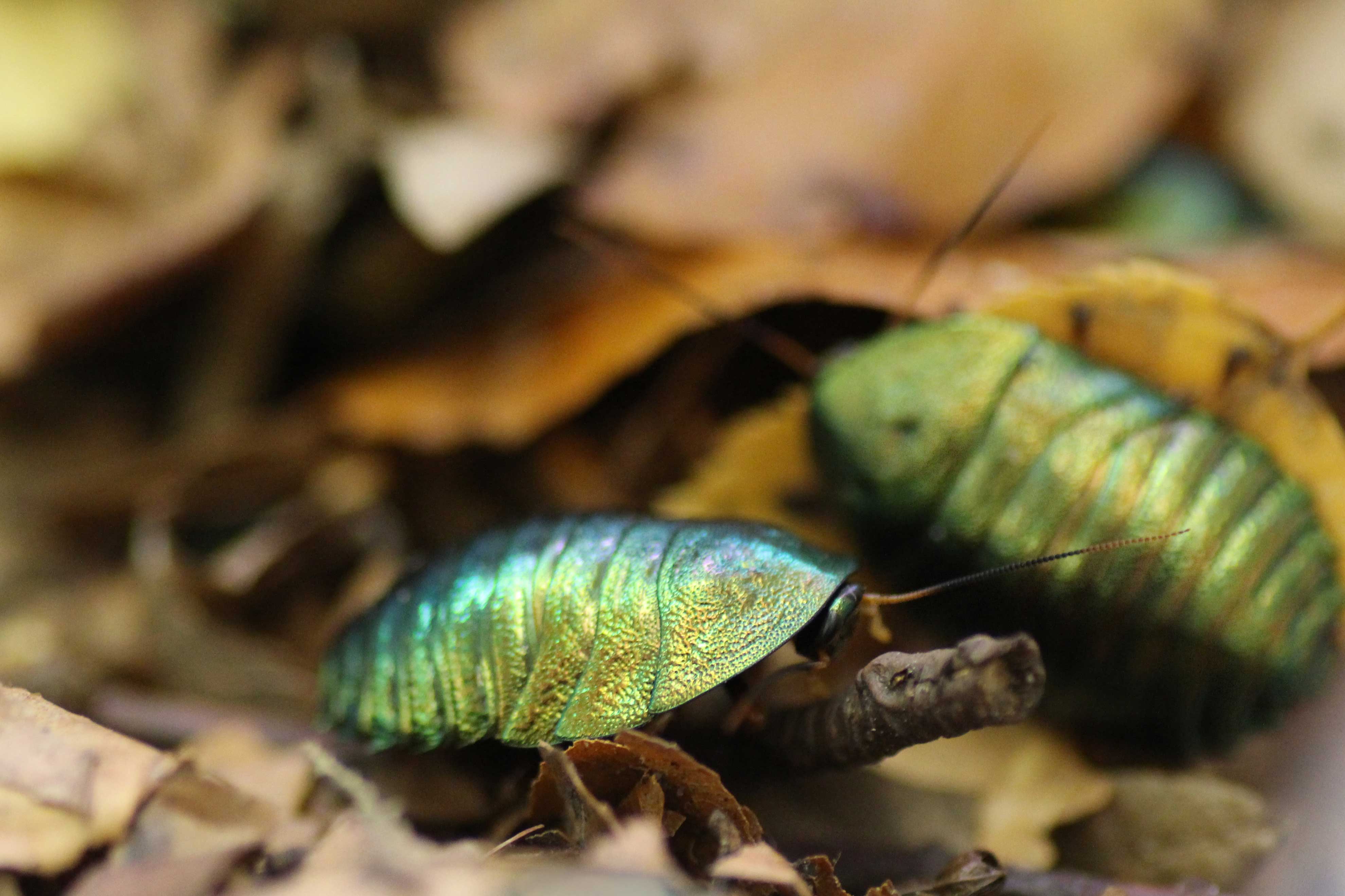
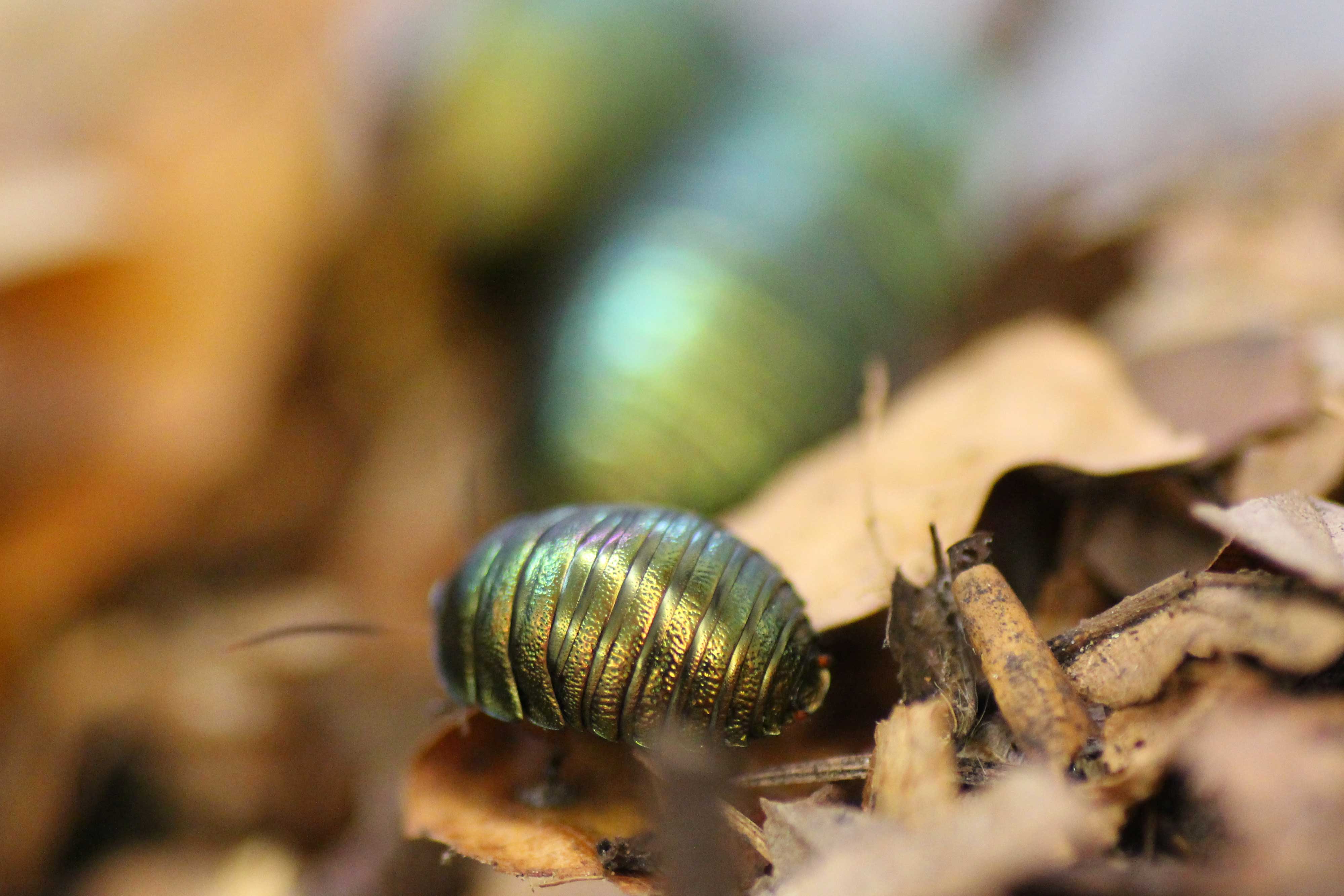
Pseudoglomeris magnifica “Emerald cockroach”
Pseudoglomeris magnifica – The iridescent emerald cockroach Pseudoglomeris magnifica, better known as the emerald cockroach, is one of the most colorful cockroach species in the world and impresses with its…
In stock
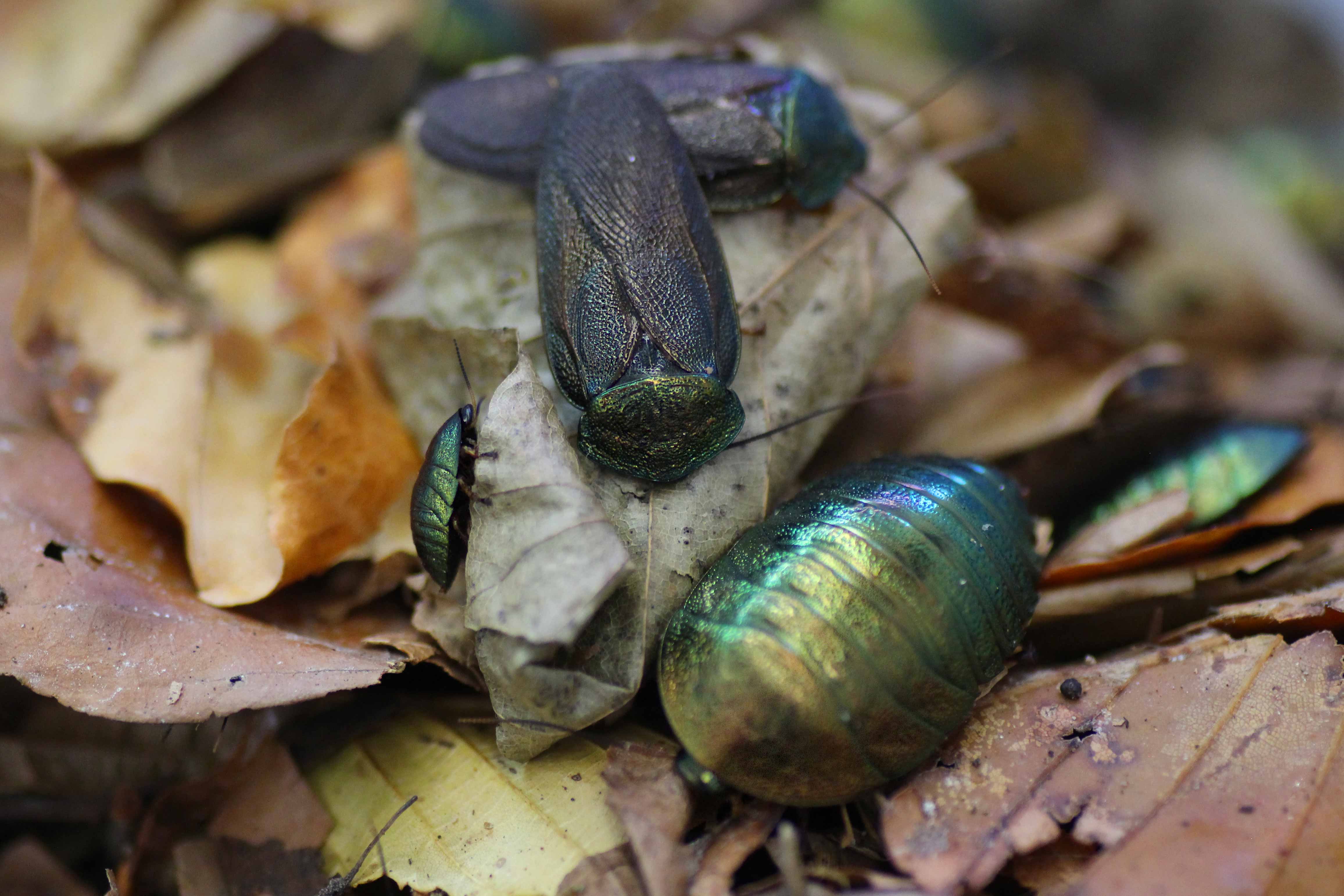
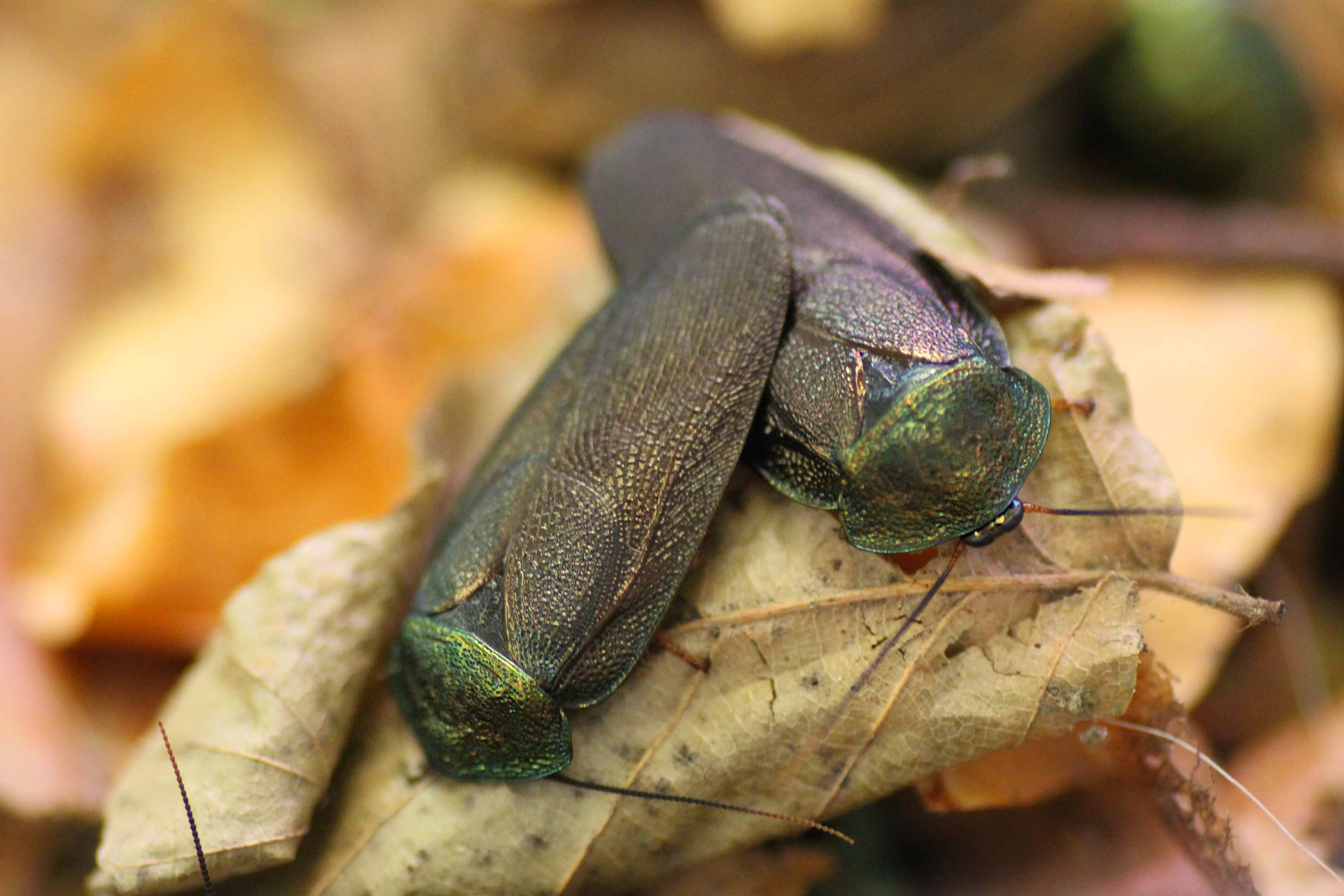
Breeding:
Under the same husbandry conditions, male Pseudoglomeris magnifica reach sexual maturity approx. 1 month before the females. As the males live a little longer than a month, fertilization can take place from the same litter. However, it is advisable to keep different developmental stages in the breeding group so that the females, which reach almost 2 years of age, can be fertilized several times. The difference in sex can be recognized by the subgenital plate in animals that are not yet sexually mature. D he subgenital plate is the plate below the genitalia. One large segment at the tip is always a female, two smaller segments at the tip a male. After the adult moult, the difference is visible to everyone, as the males are slimmer and winged. However, their wings are only used for gliding and there is no need to be afraid that they will fly away when the terrarium is opened.
After fertilization, it takes another 4-6 months until the young nymphs are born viviparous (live-fermenting). Until the first moult, the freshly born nymphs remain on the underside of their mother. Whether this not only provides them with additional protection but also with milk protein crystals is still unclear. It takes about 6-9 months for the small nymphs to grow into sexually mature cockroaches. They can easily be kept with the adults during rearing.
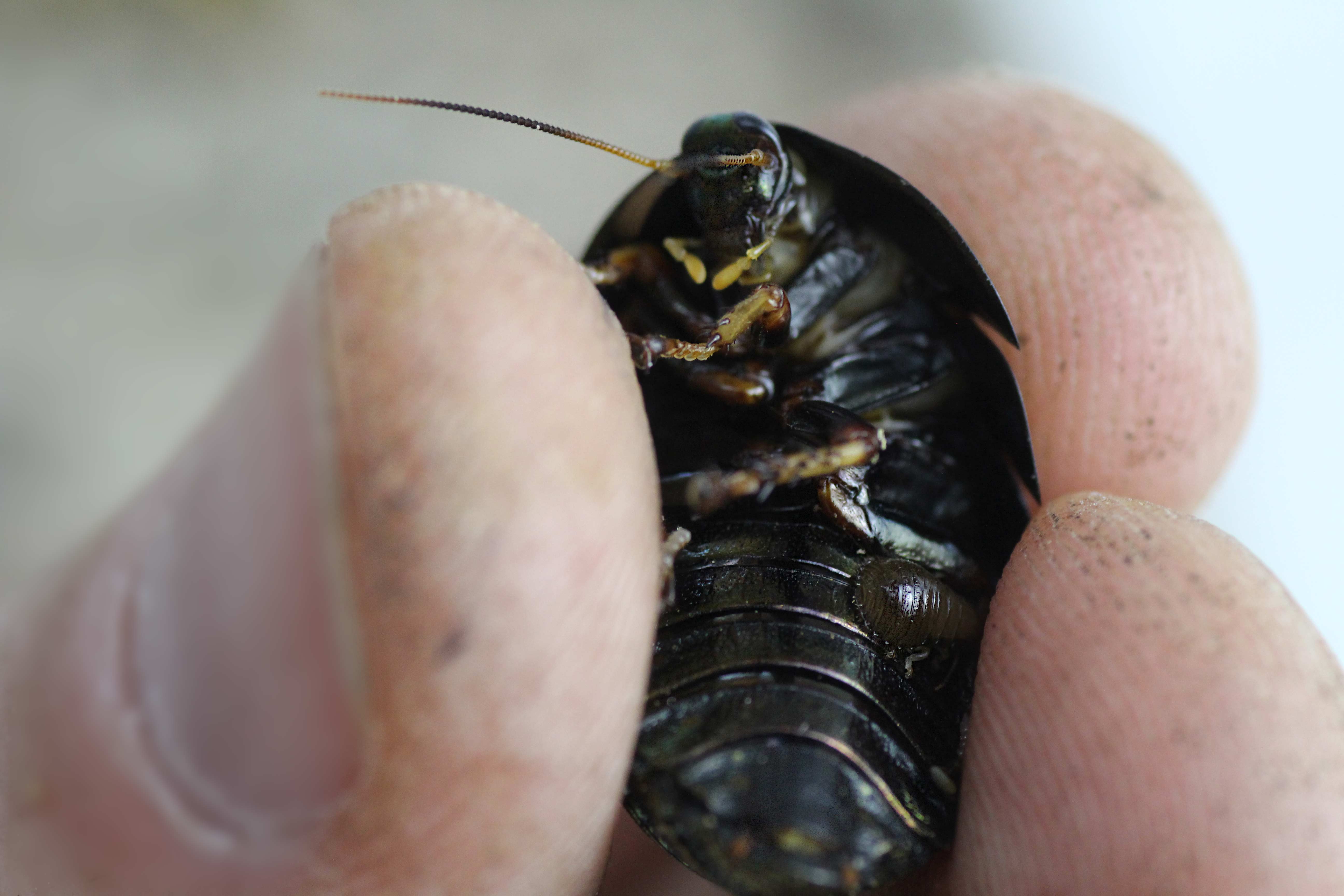
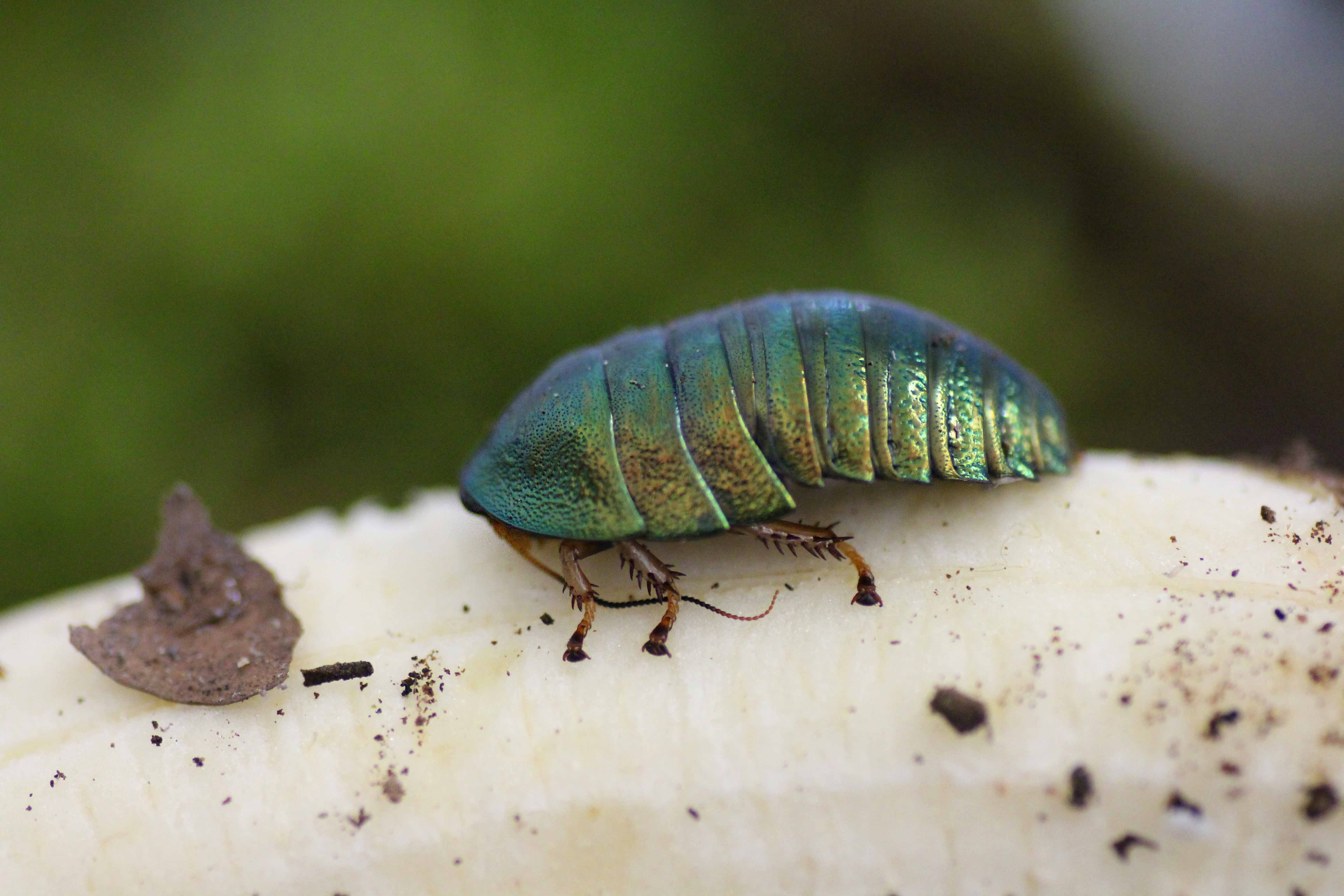
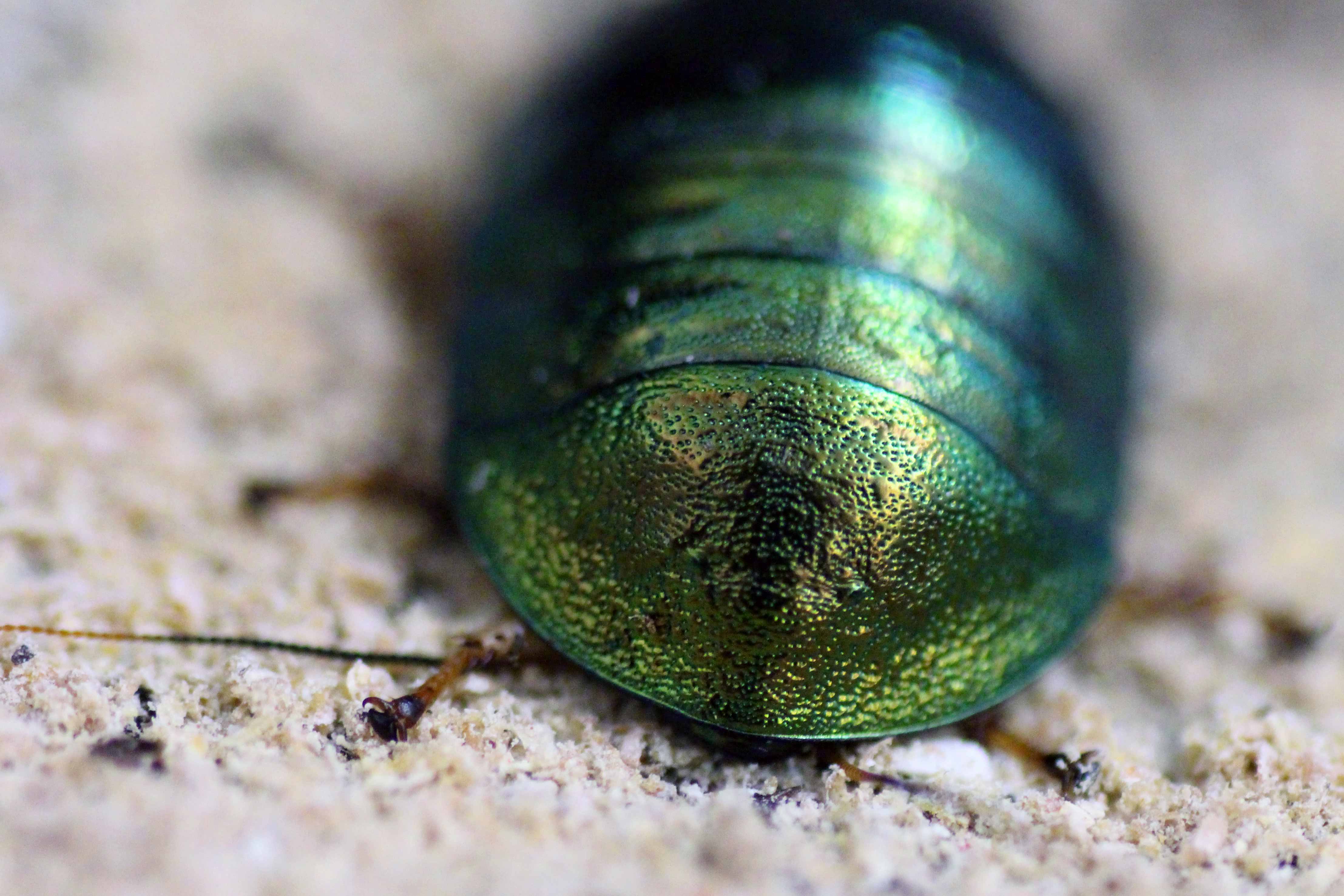
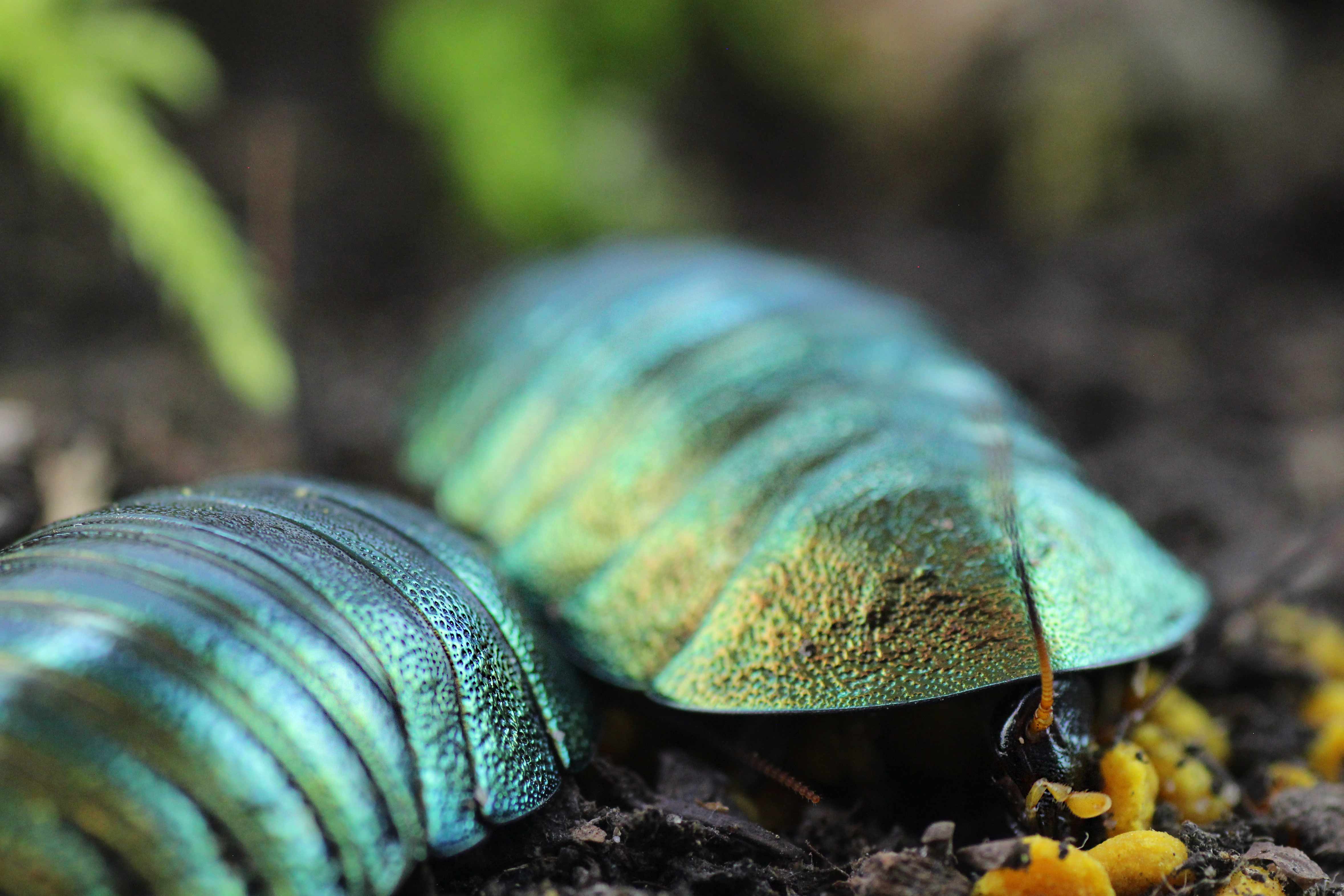
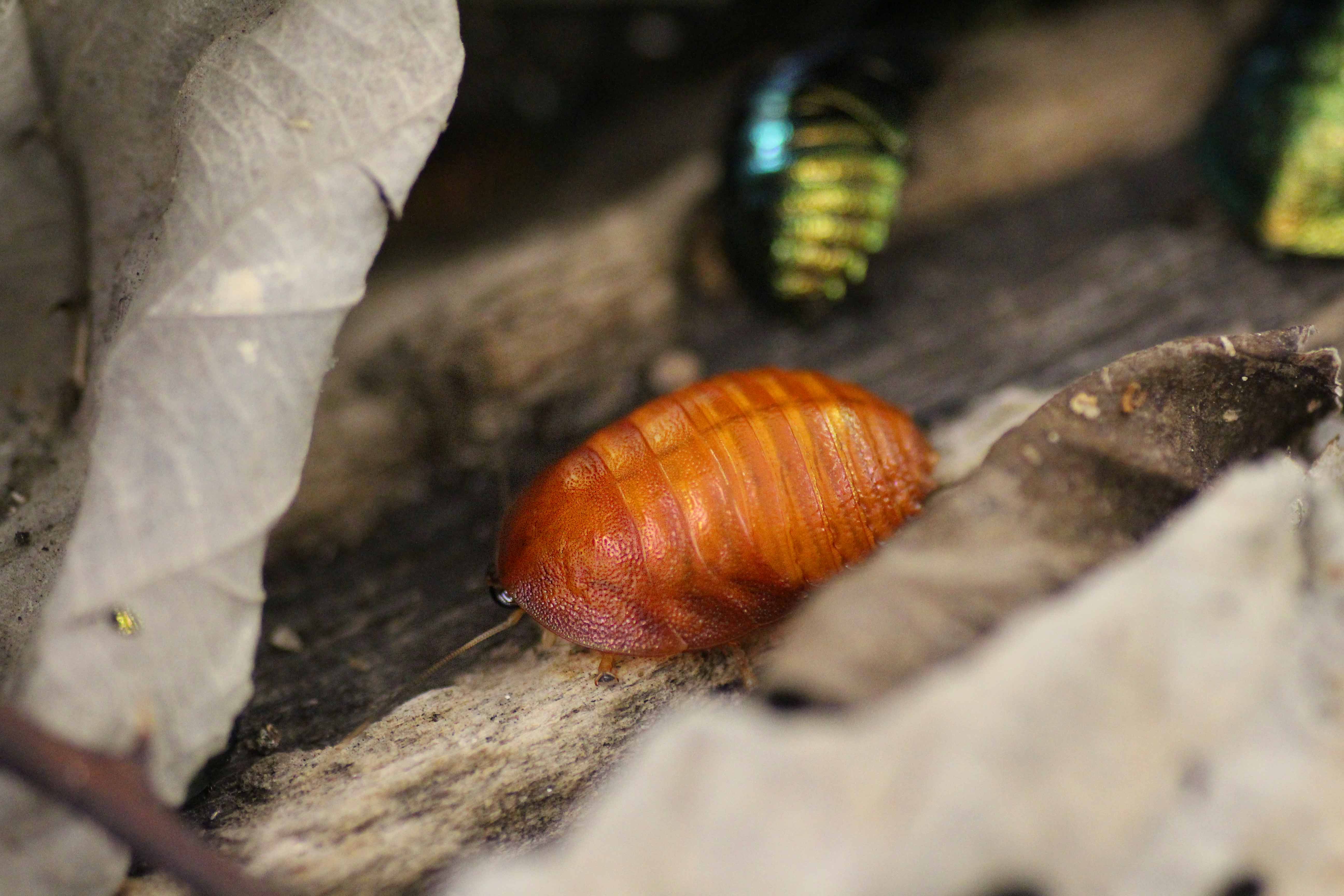
Care and nutrition:
I keep catching myself looking at the moulting remains in the Pseudoglomeris magnifica terrarium in horror until I remember that the animals do not eat their shed skins and that they are hardly distinguishable from a dead cockroach. After shedding, the still soft chitinous shell has a white to ochre appearance, which changes back to its normal coloration during drying.
The animals love sweet fruits such as mangoes, honeydew melons, bananas and apples more than anything else. Lichens and pollen are also a welcome change and are greedily devoured. To complete their diet, proteins must not be missing. For this reason, we scatter our millipede food over the cork bark once a week. This protein food mix does not mold as quickly as conventional food and is therefore also used for our Pseudoglomeris magnifica.
If you’re not at home for a few days, you can fall back on sweet Beetle Jelly such as our mango and banana varieties.
